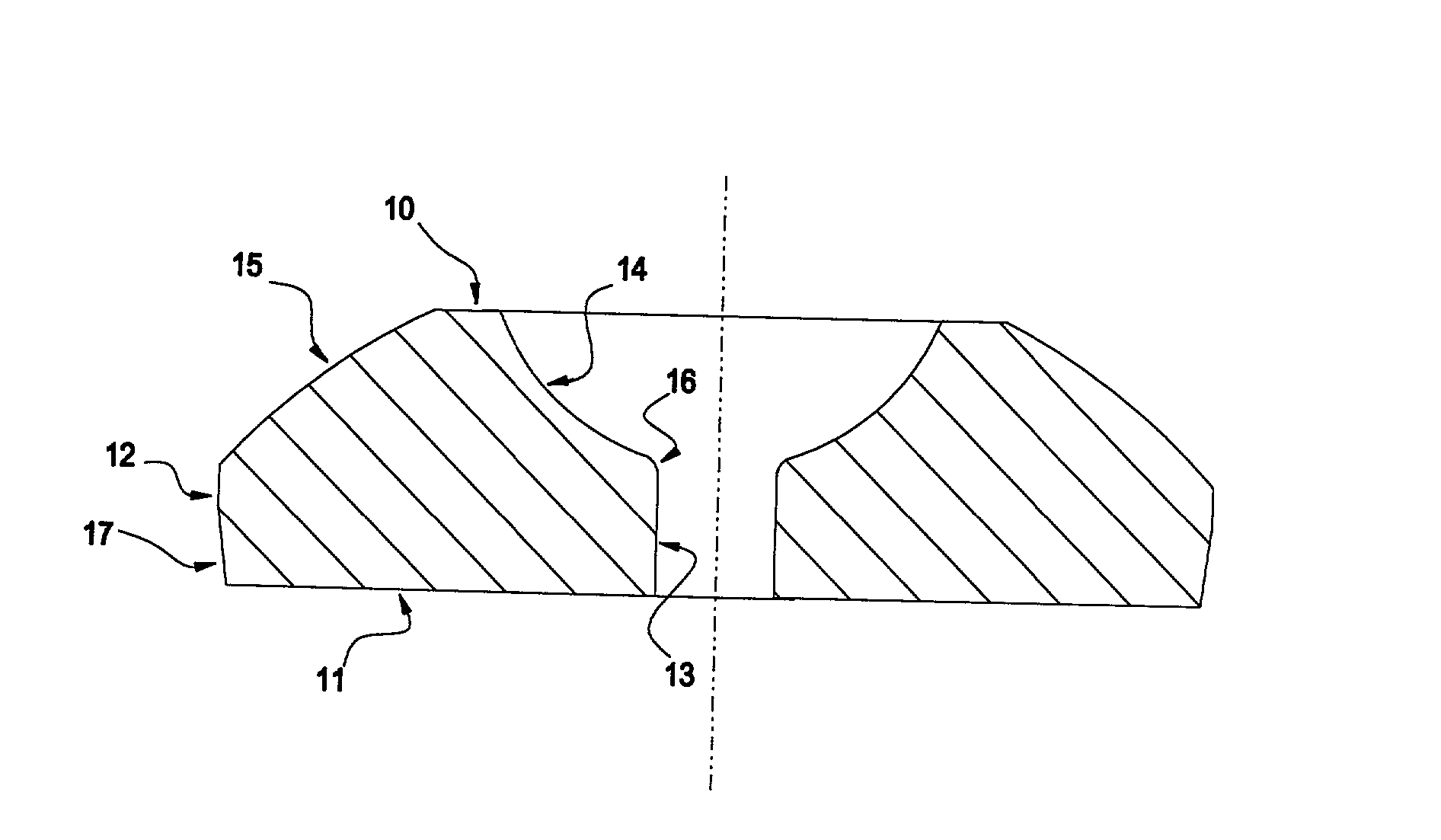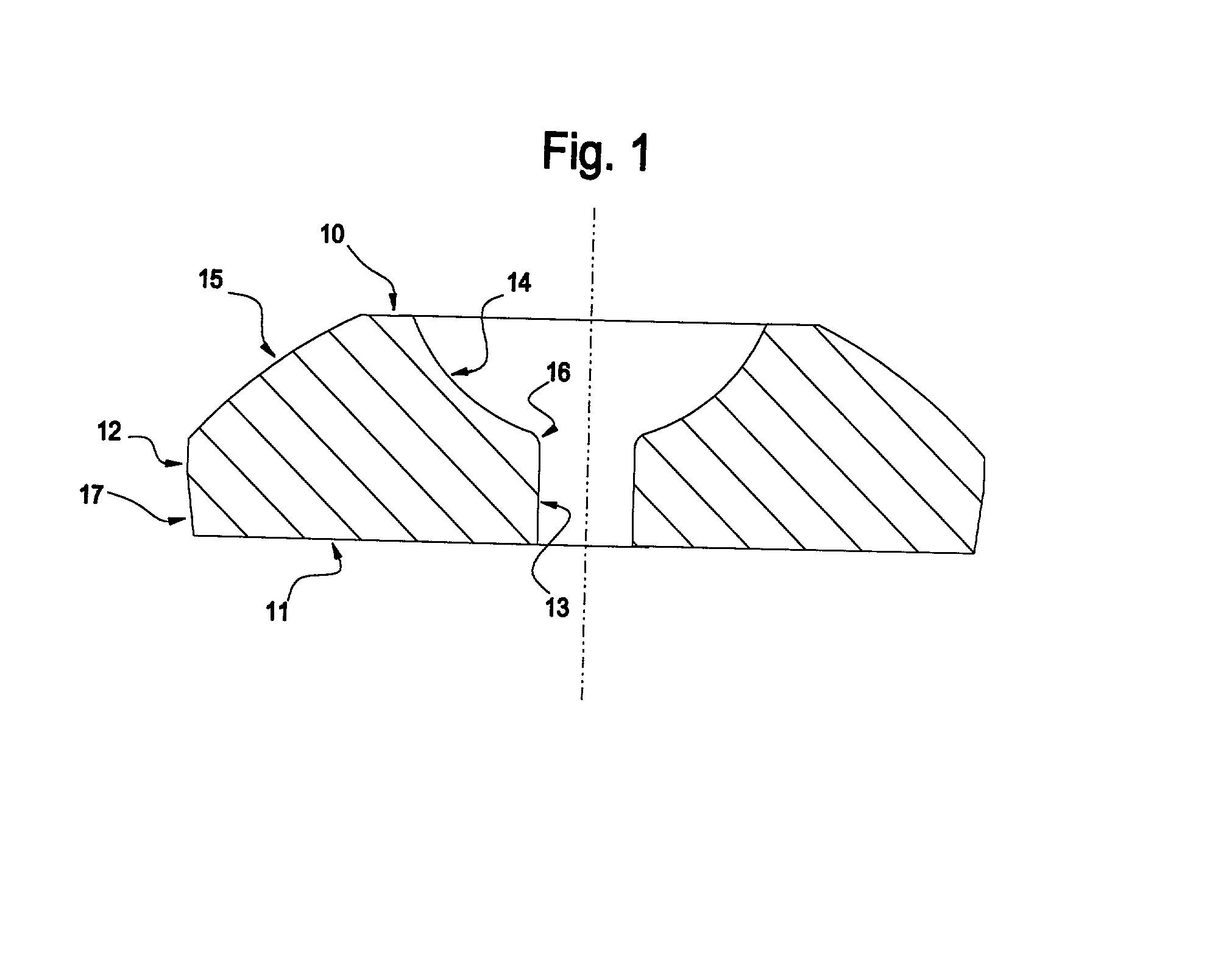Polycrystalline watch jewels and method of fabrication thereof
a technology of polycrystalline watches and jewels, applied in the field of watch jewels, can solve the problems of more moving parts, more rubies, automatic or complicated watches,
- Summary
- Abstract
- Description
- Claims
- Application Information
AI Technical Summary
Benefits of technology
Problems solved by technology
Method used
Image
Examples
example ii
[0045] 3,030 g of spray dried alumina powder grade BAX54 from Baikowski Chimie, Annecy, France, blended with 145.56 g of chromium oxide grade 2483 of Merck AG, Darmstadt, Germany was loaded in a closed circuit attriting installation. Following desorption of the attrited powder, 1.91 g of phospatidylcholine was allowed to adsorb onto the surface of the powders which were then mixed with 251.77 g of paraffin wax and 261.64 g of polyethylene. The mixed compound was molded into green watch jewels having outside diameter of 0.6 mm. Following extraction of the thermoplastic binder the green parts were sintered in a microwave oven at 600.degree. C. for 8 minutes. After sintering the parts had a deep ruby color. The diameter of the sintered microrubies was 0.5 mm as per design.
PUM
| Property | Measurement | Unit |
|---|---|---|
| length | aaaaa | aaaaa |
| diameter | aaaaa | aaaaa |
| thickness | aaaaa | aaaaa |
Abstract
Description
Claims
Application Information
 Login to View More
Login to View More - R&D
- Intellectual Property
- Life Sciences
- Materials
- Tech Scout
- Unparalleled Data Quality
- Higher Quality Content
- 60% Fewer Hallucinations
Browse by: Latest US Patents, China's latest patents, Technical Efficacy Thesaurus, Application Domain, Technology Topic, Popular Technical Reports.
© 2025 PatSnap. All rights reserved.Legal|Privacy policy|Modern Slavery Act Transparency Statement|Sitemap|About US| Contact US: help@patsnap.com


